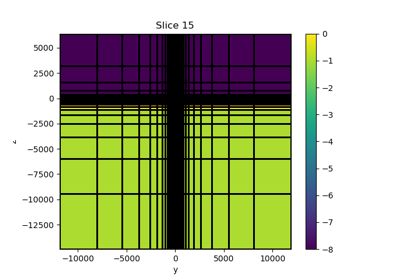SimPEG.electromagnetics.frequency_domain.Simulation3DElectricField#
- class SimPEG.electromagnetics.frequency_domain.Simulation3DElectricField(mesh, survey=None, forward_only=False, **kwargs)[source]#
Bases:
SimPEG.electromagnetics.frequency_domain.simulation.BaseFDEMSimulationBy eliminating the magnetic flux density using
\[\mathbf{b} = \frac{1}{i \omega}\left(-\mathbf{C} \mathbf{e} + \mathbf{s_m}\right)\]we can write Maxwell’s equations as a second order system in \(\mathbf{e}\) only:
\[\left(\mathbf{C}^{\top} \mathbf{M_{\mu^{-1}}^f} \mathbf{C} + i \omega \mathbf{M^e_{\sigma}} \right)\mathbf{e} = \mathbf{C}^{\top} \mathbf{M_{\mu^{-1}}^f}\mathbf{s_m} - i\omega\mathbf{M^e}\mathbf{s_e}\]which we solve for \(\mathbf{e}\).
- Parameters
mesh (discretize.base.BaseMesh) – mesh
Methods
fieldsPairalias of
SimPEG.electromagnetics.frequency_domain.fields.Fields3DElectricFieldgetA(freq)System matrix
getADeriv_mui(freq, u, v[, adjoint])Product of the derivative of the system matrix with respect to the permeability model and a vector.
getADeriv_sigma(freq, u, v[, adjoint])Product of the derivative of our system matrix with respect to the conductivity model and a vector
getRHS(freq)Right hand side for the system
getRHSDeriv(freq, src, v[, adjoint])Derivative of the Right-hand side with respect to the model.
getADeriv

